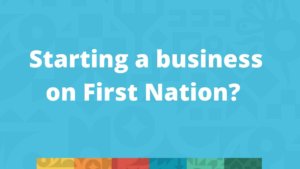A successful business doesn’t just happen. Like a garden, a healthy business requires planning, nurturing, and a hospitable environment. It also requires experimentation, adaptation, and research.
And, while a business plan is a great way for an entrepreneur to capture and communicate their vision – especially to potential lenders, investors, and shareholders – it generally comes later in the development process and is often created with the help of a third party.
For us, developing a business plan with outside help is healthy and provides a more holistic view of the co-op. And working with a third party, like a business consultant, can bring important insights you might otherwise miss.
Turning ideas into actions
Because a business plan comes later in the development phase, many of the ideas in it have usually been fleshed out or tested in some way.
So, how does a group of entrepreneurs – especially those starting a co-op – get through that first ‘ideas’ stage and prepare to start a business? By using a Business Model Canvas.
Origins of the Business Model Canvas
Initially proposed by entrepreneur and business theorist Alexander Osterwalder, the Business Model Canvas is best captured in the book Business Model Generation: A Handbook for Visionaries, Game Changers, and Challengers.
In it, the authors describe a canvas that entrepreneurs can use to explore ideas, and then those ideas into a reality. They tested this canvas through a crowdsourcing effort with 470 different ‘practitioner co-authors’ in 45 countries.
Definition of a business model
The book defines a business model as ‘the rationale and infrastructure of how an organization creates, delivers and captures value.’ So, it’s really about being able to think through, articulate, and map what you’re trying to do, why you want to do it, and how you will do it well. This process will help you define your value proposition.
For groups forming co-ops, this blend of creative and practical thinking is essential.
In “The Case for a Socially Oriented Business Model Canvas: The Social Enterprise Model Canvas,” Sergio Sparviero notes, “business models are simplifications of real systems that are used for explaining performance and competitive advantage or for rethinking and redesigning an organization’s strategy in order to benefit from innovations and other opportunities”.
In other words, a business model is a testing grounds and thought experiment, and a tool for educating and communicating with potential shareholders. And a good business model often plays “an important role in coordinating and facilitating social action within the organization and with external stakeholders”.
How the business model canvas fosters innovation
Co-op entrepreneurs are no strangers to innovating on traditional business models. If you’ve chosen the co-op model, there’s a good chance you need to innovate. This could mean scaling your independent business, bringing an important asset to your community, or creating a service no one else will provide. The business model canvas can help you innovate.
Prototyping your business adds perspective
In an interview with Institute Management Development, Osterwalder talks about how entrepreneurs should design their business model, much like architects do for buildings.
“It needs to work like an architect drawing table to put your business model together and experiment,” he says.
In short, the canvas provides an opportunity to prototype a business model. It also provides a way to test theories, map out processes, and understand the business environment before putting a lot of effort into developing the business.
For co-ops, this also provides an opportunity to bring diverse perspectives into the conversation and make the model more robust.
How co-ops can benefit from the business model canvas
Because co-ops are a group effort, they require a great deal of agreement and communication to get off the ground. An exercise like the Business Model Canvas can help align everyone behind the work that needs to be done. You “create a shared language” to cooperate, says Osterwalder.
The canvas exercise also helps support all three pillars of good co-op governance. It helps form a vision everyone can get behind, and helps create a map for making legitimate decisions.
How we fit in
With a solid understanding of your business model and strong governance practices, you can create a board and membership that supports, understands, and promotes your co-op. To get started, try our Business Model Canvas tool or contact us for support. Or take the Introduction to Co-ops course to learn everything you need to know about co-ops and the canvas!





